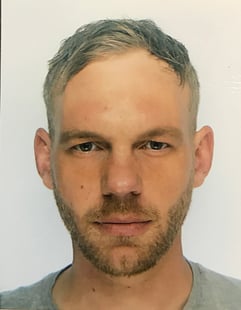

ANIMAFEST PRO | ANIMAFEST SCANNER VI | SIMPOZIJ O SUVREMENOJ ANIMACIJI | ANIMAFEST SCANNER VI - PANEL 3: ANIMACIJA I (VIRTUALNA) STVARNOST
Main Ballet Tanks. Istraživanje mogućnosti prijenosa estetizirane, antropomorfne motorike i pokreta na neantropomorfni, mehanički stroj metodama eksperimentalne animacije - Bernhard Schmitt
At the dawn of the age of robotics questions regarding the aesthetics of mechanically moved devices that communicate directly with humans are raised increasingly. Since a major part of this communication will be with non-verbal, non-anthropomorphically shaped machines, the movement-design, the animation of these machines will be crucial for society to accept.
Although a lot of research regarding the imitation of human movement for anthropomorphic robots has been undertaken, the question of how the transfer of the same kind of movement to non-anthropomorphic devices would influence the acceptance of that machine as a social entity remains widely uncharted. To explore this question, we looked at a specific kind of movement: dance. The rhythmic moving of one’s body to music with its aesthetic and symbolic value seems to be a type of communication that requires the human body to be executed. But does it? Choreographed, theatrical dance, one of the oldest performative art forms shows surprising parallels to another kind of performance steeped in history, usually not considered a performative art form: military parades and marches.
As George Orwell mentioned in his 1940 essay England Your England the parallels are conspicuous: The ceremonial setting, a similar appearance of the participants, synchronised movements and the adaptation of the accompanying music. In case of modern military parades these patterns eventually got assigned to nonhuman participants, first to animals involved in warfare like cavalry horses, later to their replacements such as armoured vehicles.
The main objective of our experimental animation – dancing military vehicles – is to fathom the parallels between these two seemingly widely separated performances and by that exploring the possibilities and limits of the transferability of anthropomorphic gestures and locomotion to non-anthropomorphic shapes and devices.
Bernhard Schmitt is an assistant professor at the School of Art, Design & Media at Nanyang Technological University in Singapore. His area of expertise is stop-motion and experimental animation techniques. He graduated from Mainz University of Applied Science in 2008. Prior to joining NTU, he worked as a stop-motion animator and rigger for production companies including Aardman and Disney animations. As a concept artist and creative producer, he oversaw several independent productions such as the 2012 series of experimental animation music videos for the album Auch of the acclaimed band Die Ärzte. From 2015 to 2017 he scripted and directed the German TV series Sandmännchen, one of the longest running animation shows in the world. Bernhard’s research interests are in the areas of stop-motion animation, experimental animation and interdisciplinary research in art and technology.


